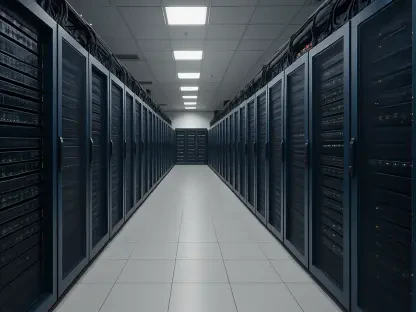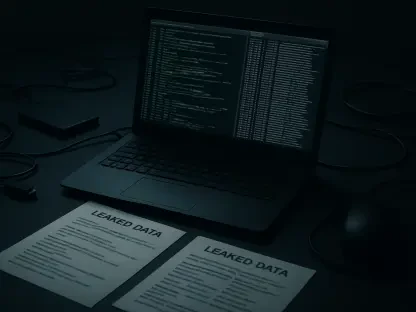The 2024 CWE Top 25 list has been unveiled, revealing the most dangerous software weaknesses and providing crucial insights from Alec Summers, Project Leader for the CVE Program at MITRE. This year, the list is based on a new methodology that draws on input from the CNA (CVE Numbering Authorities) community. This method underscores the CNAs’ critical role in pinpointing and mapping vulnerabilities directly linked to products, leveraging their unique, authoritative relationship with these products. This democratized approach to data analysis gives CNAs an edge over downstream analysts and underscores their essential position in vulnerability management.
A recurring theme in this year’s findings is the tenacity of certain vulnerabilities, such as CWE-79 (Cross-Site Scripting), CWE-89 (SQL Injection), and CWE-125 (Out-of-bounds Read), that continue to rank high on the list year after year. Despite being well-known, these issues have not been entirely eradicated, highlighting ongoing struggles within software development practices to fully address them. These persistent vulnerabilities remind us of the critical need for more robust and effective mitigation strategies and underline the necessity for continuous attention to secure software development practices.
Persistent Vulnerabilities Resurface
Year after year, certain vulnerabilities maintain their presence on the CWE Top 25 list, frustrating security professionals and developers alike. These persistent issues, including CWE-79 (Cross-Site Scripting), CWE-89 (SQL Injection), and CWE-125 (Out-of-bounds Read), serve as a constant reminder of the challenges faced in successfully addressing and mitigating known weaknesses in software. The continued prevalence of these vulnerabilities signals that, despite awareness and targeted efforts, complete eradication remains a daunting task. Their consistent appearance underscores the need for developers to prioritize secure coding practices and maintain rigorous testing standards to detect and fix these flaws before they manifest in deployed products.
One possible explanation for these enduring vulnerabilities is the complexity of modern software systems. As software becomes more intricate, the likelihood of introducing new weaknesses or overlooking existing ones increases. Additionally, legacy codebases—which may harbor long-standing vulnerabilities—are often integrated with newer systems, exacerbating the difficulty of achieving a thorough remediation. Furthermore, the rapid pace of technological advancements can outstrip the development and implementation of effective countermeasures, leaving software engineers playing catch-up against emerging threats and attack vectors. This dynamic landscape necessitates an ever-evolving, proactive approach to cybersecurity and vulnerability management.
AI Tools and Their Influence
The role of AI-assisted coding tools in modern software development has garnered significant attention, raising questions about the capabilities and limitations of these technologies in addressing coding vulnerabilities. Although the current CWE analysis has not conclusively identified vulnerabilities directly caused by AI, studies suggest that AI tools can replicate human errors, resulting in weaknesses akin to those covered by CWE. Despite these concerns, Alec Summers of MITRE remains optimistic about the potential of AI tools to improve over time, particularly in detecting code weaknesses. However, he emphasizes the need for a diverse array of toolsets rather than reliance on a single, all-encompassing solution.
AI’s ability to enhance vulnerability detection hinges on its capacity to learn from vast datasets and identify patterns that may elude human analysts. Advanced machine learning algorithms can be trained to recognize subtle indicators of potential weaknesses, enabling them to flag issues early in the development process. This can significantly reduce the risk of vulnerabilities being introduced into finished products. However, the technology is not without its limitations; AI tools may struggle with nuanced and context-specific vulnerabilities that require a deeper understanding of application logic and behavior. This highlights the importance of complementing AI-driven tools with traditional, human-led security assessments to achieve a more comprehensive defense against software weaknesses.
The Role of CNAs and Root Cause Mapping
Central to the enhanced value of the 2024 CWE Top 25 list is the expanded role of CNAs in root cause mapping. By leveraging their close relationship with products, CNAs contribute to a more granular and accurate analysis of vulnerabilities, enhancing the list’s relevance and utility for cybersecurity efforts. Alec Summers advocates for broader adoption of CWE root cause mapping, as this practice offers detailed insights that can inform more effective mitigation strategies. Thinking about vulnerabilities from a “weakness” perspective rather than purely an attack perspective can significantly benefit product developers. This mindset fosters a feedback loop that integrates cybersecurity considerations into the software development lifecycle (SDLC) and architecture design.
Integrating root cause analysis into the SDLC can also yield financial benefits by minimizing post-deployment vulnerability management costs. Addressing weaknesses during development, rather than after deployment, mitigates the risk of costly breaches and reduces the need for extensive post-release patches and fixes. Additionally, the proactive identification and resolution of potential vulnerabilities can improve the overall quality and security of software products, enhancing user trust and satisfaction. As the field of cybersecurity continues to evolve, the expanded participation of CNAs in root cause mapping promises to not only bolster product security but also drive operational efficiency in managing vulnerabilities.
Future Prospects and Recommendations
The 2024 CWE Top 25 list has just been released, spotlighting the most critical software weaknesses and featuring key insights from Alec Summers, Project Leader of the CVE Program at MITRE. This year, the list employs a new methodology that incorporates feedback from the CNA (CVE Numbering Authorities) community, illustrating their vital role in identifying and mapping vulnerabilities directly tied to specific products. This collaborative approach leverages the CNAs’ unique, authoritative relationship with these products, providing them with a distinct advantage over downstream analysts and emphasizing their crucial position in vulnerability management.
One of the striking aspects of this year’s findings is the persistence of specific vulnerabilities like CWE-79 (Cross-Site Scripting), CWE-89 (SQL Injection), and CWE-125 (Out-of-bounds Read), which remain prominent on the list year after year. Despite being widely known, these issues have yet to be fully resolved, underscoring ongoing challenges in software development practices. Their continued prevalence points to the urgent need for more effective mitigation strategies and highlights the importance of ongoing vigilance and improvement in secure software development practices.









